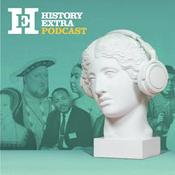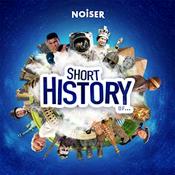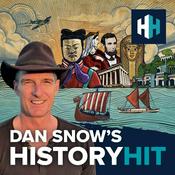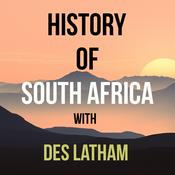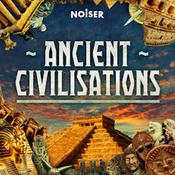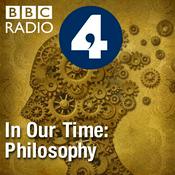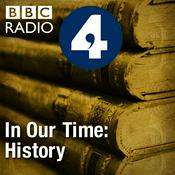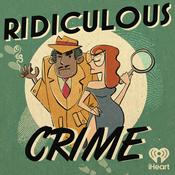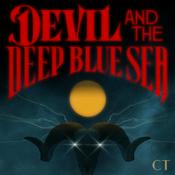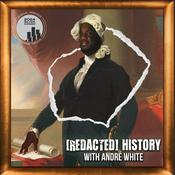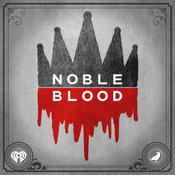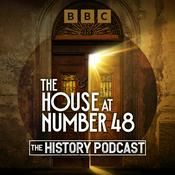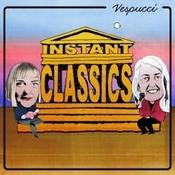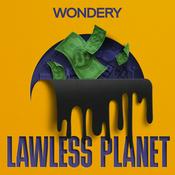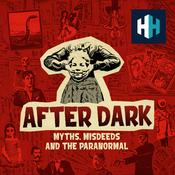22 episodes

The Hidden History of Suicide: Asylums, Burials & Criminalization
2025/12/22 | 1h 7 mins.
Behind locked doors, entire lives were recorded — and then forgotten.In this episode of The Resurrectionists, Dr. Alexandra Lord explores the hidden histories of 19th-century asylums; places of care, control, silence, and secrecy. Through archival records, institutional spaces, and the people whose lives were shaped behind locked doors, we examine how mental health, disability, and social difference were understood in the past.From forgotten corridors to sealed files, this conversation looks at what survives in the historical record and what was deliberately erased. We discuss the role of institutions, the power of archives, and how historians and archaeologists attempt to recover voices long excluded from official narratives.🎧 Love mysteries? Watch more episodes and dive deeper into the stories!https://bit.ly/resurrectionists👉 Explore more mysteries and exclusive content here!https://linktr.ee/theresurrectionists💡 Got a case in mind? Suggest new episode ideas here!https://bit.ly/episodesuggestionsGuest Infohttps://alexandramlord.com/https://www.linkedin.com/in/alexandra-lord-ab2260b/MusicDanse Macabre by Kevin MacLeod is licensed under a Creative Commons Attribution 4.0 licence. https://creativecommons.org/licenses/by/4.0/Source: http://incompetech.com/music/royalty-free/index.html?collection=005Artist: http://incompetech.com/

From Triage to Recovery: Inside the Napoleonic Army's Medical System
2025/12/18 | 58 mins.
he only thing more terrifying than facing Napoleon’s army was being wounded by it.Step onto the brutal battlefields of the 19th century as we explore the shocking reality of Napoleonic military medicine. From the legendary speed of Dominique Jean Larrey’s "flying ambulances" to the grueling experience of surgery without anesthesia, historian Dr. Nebiha Guiga joins us to reveal how the wounded actually survived—or didn’t.🎧 Love mysteries? Watch more episodes and dive deeper into the stories!https://bit.ly/resurrectionists👉 Explore more mysteries and exclusive content here!https://linktr.ee/theresurrectionists💡 Got a case in mind? Suggest new episode ideas here!https://bit.ly/episodesuggestionsGuest Infohttps://www.amazon.fr/bless%C3%A9s-Napol%C3%A9on-Nebiha-Guiga/dp/2379338507https://www.oeaw.ac.at/en/ihb/personen/guiga-nebihaMusicDanse Macabre by Kevin MacLeod is licensed under a Creative Commons Attribution 4.0 licence. https://creativecommons.org/licenses/by/4.0/Source: http://incompetech.com/music/royalty-free/index.html?collection=005Artist: http://incompetech.com/

Off-Limits Archaeology: Discoveries from the World’s Most Dangerous Places
2025/12/08 | 1h 1 mins.
Discover what archaeology looks like in the world’s most dangerous places.In this episode, archaeologist and former UN peacekeeper Kevin MacDonald reveals how conflict zones, closed borders, and off-limits military landscapes hide some of the best-preserved ancient sites on Earth.From no-man’s-lands to desert buffer zones, we explore how war accidentally protects the past—and the unexpected discoveries made where few people are allowed to go.🎧 Love mysteries? Watch more episodes and dive deeper into the stories!https://bit.ly/resurrectionists👉 Explore more mysteries and exclusive content here!https://linktr.ee/theresurrectionists💡 Got a case in mind? Suggest new episode ideas here!https://bit.ly/episodesuggestionsGuest InfoInterviewshttps://www.youtube.com/watch?v=IxYwSVaHidc&t=161shttps://www.youtube.com/watch?v=Hmp9ooQRNY4&t=150shttps://www.iheart.com/podcast/105-it-could-happen-here-30717896/episode/what-its-like-to-be-a-250952632/https://www.youtube.com/watch?v=rwH_ONxkDeo&t=249sArticleshttps://www.academia.edu/85661494/Living_With_The_Lake_The_Archaeology_of_Lake_Settlement_in_Loughrea_and_the_Surrounding_Landscapehttps://www.academia.edu/27311015/PEACEKEEPING_ON_THE_EDGEhttps://www.academia.edu/22330434/The_Archaeology_of_OP_55https://www.academia.edu/5808754/Patrolling_the_Berm_Discovering_the_Landscape_Archaeology_of_Western_SaharaMusicDanse Macabre by Kevin MacLeod is licensed under a Creative Commons Attribution 4.0 licence. https://creativecommons.org/licenses/by/4.0/Source: http://incompetech.com/music/royalty-free/index.html?collection=005Artist: http://incompetech.com/

Grave Digger Confessions: Buried Alive, Dynamite and Harley-Davidsons
2025/12/01 | 1h 36 mins.
What really happens beneath the surface of our cemeteries? In this episode of The Resurrectionists, I’m joined by Dr. Helen Frisby and Prof. Stuart Prior to uncover the hidden world of grave diggers, burial archaeology, and the strange (and sometimes explosive) secrets of modern and Victorian cemeteries.🎧 Love mysteries? Watch more episodes and dive deeper into the stories!https://bit.ly/resurrectionists👉 Explore more mysteries and exclusive content here!https://linktr.ee/theresurrectionists💡 Got a case in mind? Suggest new episode ideas here!https://bit.ly/episodesuggestionsGuest InfoHelen's LinkedIn: https://www.linkedin.com/in/dr-helen-frisby-580ba895/ Stuart's LinkedIn: https://www.linkedin.com/in/prof-stuart-prior-24002874/Paper: https://www.tandfonline.com/doi/full/10.1080/00794236.2024.2356653 Book: https://www.amazon.co.uk/Traditions-Death-Burial-Shire-Library/dp/1784423777/ref=sr_1_1?crid=2AO91RY97VEOK&dib=eyJ2IjoiMSJ9.USD9lXMGDWmM-SxzGHSgrYIjj6qvuEN7TiLWVpdcP-0.thzl0gCtQlEQp_0P4mvIGO0XpVtwDA8gbFoJpS4GEjU&dib_tag=se&keywords=helen+frisby&qid=1756201886&sprefix=helen+frisby%2Caps%2C100&sr=8-1 MusicDanse Macabre by Kevin MacLeod is licensed under a Creative Commons Attribution 4.0 licence. https://creativecommons.org/licenses/by/4.0/Source: http://incompetech.com/music/royalty-free/index.html?collection=005Artist: http://incompetech.com/

The Dark Victorian Obsession with Ancient Egypt: Curses, Mummies & Madness
2025/11/24 | 1h 8 mins.
Unlock the strange, spooky, and often disturbing Victorian obsession with Ancient Egypt.In this episode of The Resurrectionists, I sit down with Dr. Jay Sullivan to explore how the Victorians turned mummies, pharaohs, and ancient artefacts into a Gothic cultural phenomenon filled with superstition, pseudo-science, and full-blown madness.🎧 Love mysteries? Watch more episodes and dive deeper into the stories!https://bit.ly/resurrectionists👉 Explore more mysteries and exclusive content here!https://linktr.ee/theresurrectionists💡 Got a case in mind? Suggest new episode ideas here!https://bit.ly/episodesuggestionsGuest InfoLinkedIn: https://www.linkedin.com/in/jay-sullivan/Website: https://www.drjaysullivan.com/Bluesky: https://bsky.app/profile/drjaysullivan.bsky.socialBook: https://link.springer.com/book/10.1007/978-3-031-96394-0?utm_medium=affiliate&utm_source=commission_junction_authors&utm_campaign=CONR_BOOKS_ECOM_GL_PBOK_ALWYS_DEEPLINK&utm_content=deeplink&utm_term=PID101491883&CJEVENT=16baa701c8bf11f0815401800a18b8fcMusicDanse Macabre by Kevin MacLeod is licensed under a Creative Commons Attribution 4.0 licence. https://creativecommons.org/licenses/by/4.0/Source: http://incompetech.com/music/royalty-free/index.html?collection=005Artist: http://incompetech.com/
More History podcasts
Trending History podcasts
About The Resurrectionists | A Morbid Archaeology and History Podcast
Listen to The Resurrectionists | A Morbid Archaeology and History Podcast, Real Dictators and many other podcasts from around the world with the radio.net app
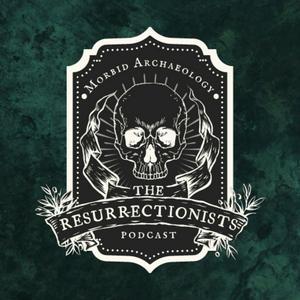
Get the free radio.net app
- Stations and podcasts to bookmark
- Stream via Wi-Fi or Bluetooth
- Supports Carplay & Android Auto
- Many other app features
Get the free radio.net app
- Stations and podcasts to bookmark
- Stream via Wi-Fi or Bluetooth
- Supports Carplay & Android Auto
- Many other app features


The Resurrectionists | A Morbid Archaeology and History Podcast
download the app,
start listening.


